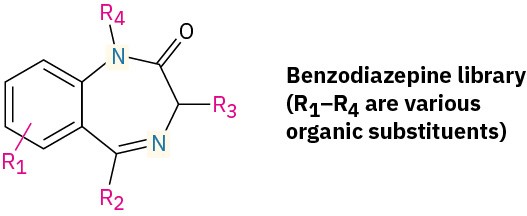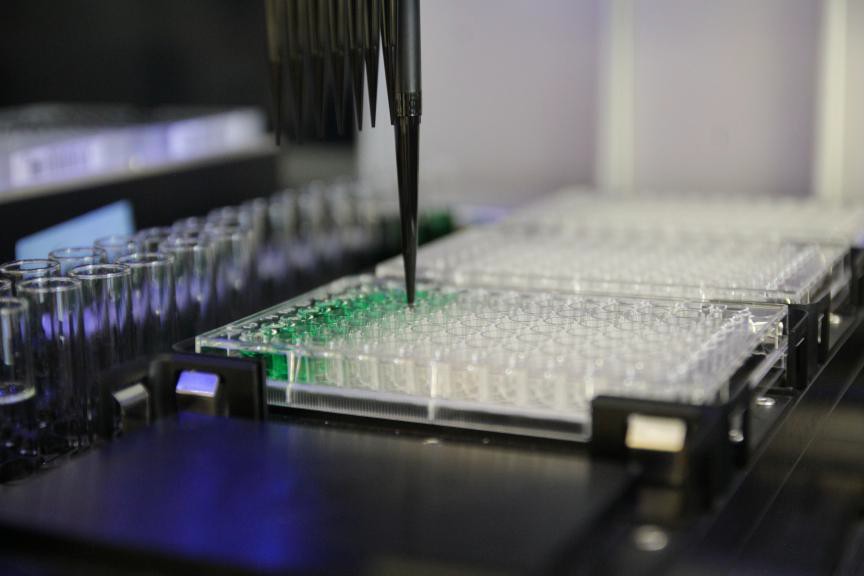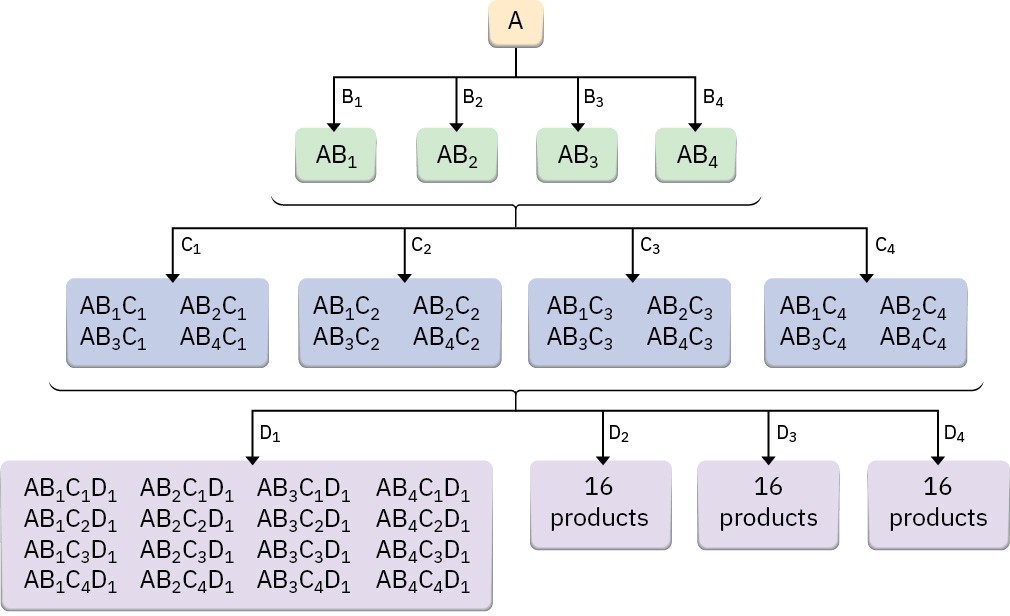Chemistry Matters — Combinatorial Chemistry
Traditionally, organic compounds have been synthesized one at a time. This works well for preparing large amounts of a few substances, but it doesn’t work so well for preparing small amounts of a great many substances. This latter goal is particularly important in the pharmaceutical industry, where vast numbers of structurally similar compounds must be synthesized and screened to find an optimum drug candidate.
To speed the process of drug discovery, combinatorial chemistry has been developed to prepare what are called combinatorial libraries, in which anywhere from a few dozen to several hundred thousand substances are prepared simultaneously. Among the early successes of combinatorial chemistry is the development of a benzodiazepine library, a class of aromatic compounds commonly used as antianxiety agents.

Two main approaches to combinatorial chemistry are used—parallel synthesis and split synthesis. In parallel synthesis, each compound is prepared independently. Typically, a reactant is first linked to the surface of polymer beads, which are then placed into small wells on a 96-well glass plate. Programmable robotic instruments add different sequences of building blocks to the different wells, thereby making 96 different products. When the reaction sequences are complete, the polymer beads are washed and their products are released.
In split synthesis, the initial reactant is again linked to the surface of polymer beads, which are then divided into several groups. A different building block is added to each group of beads, the different groups are combined, and the reassembled mix is again split to form new groups. Another building block is added to each group, the groups are again combined and redivided, and the process continues. If, for example, the beads are divided into four groups at each step, the number of compounds increases in the progression 4 → 16 → 64 →
256. After 10 steps, more than 1 million compounds have been prepared (Figure 16.23).
Of course, with so many different final products mixed together, the problem is to identify them. What structure is linked to what bead? Several approaches to this problem have been developed, all of which involve the attachment of encoding labels to each polymer bead to keep track of the chemistry each has undergone. Encoding labels used thus far have included proteins, nucleic acids, halogenated aromatic compounds, and even computer chips.

Figure 16.22 Organic chemistry by robot means no spilled flasks!

Figure 16.23 The results of split combinatorial synthesis. Assuming that 4 different building blocks are used at each step, 64 compounds result after 3 steps, and more than one million compounds result after 10 steps.

